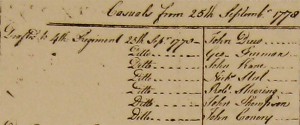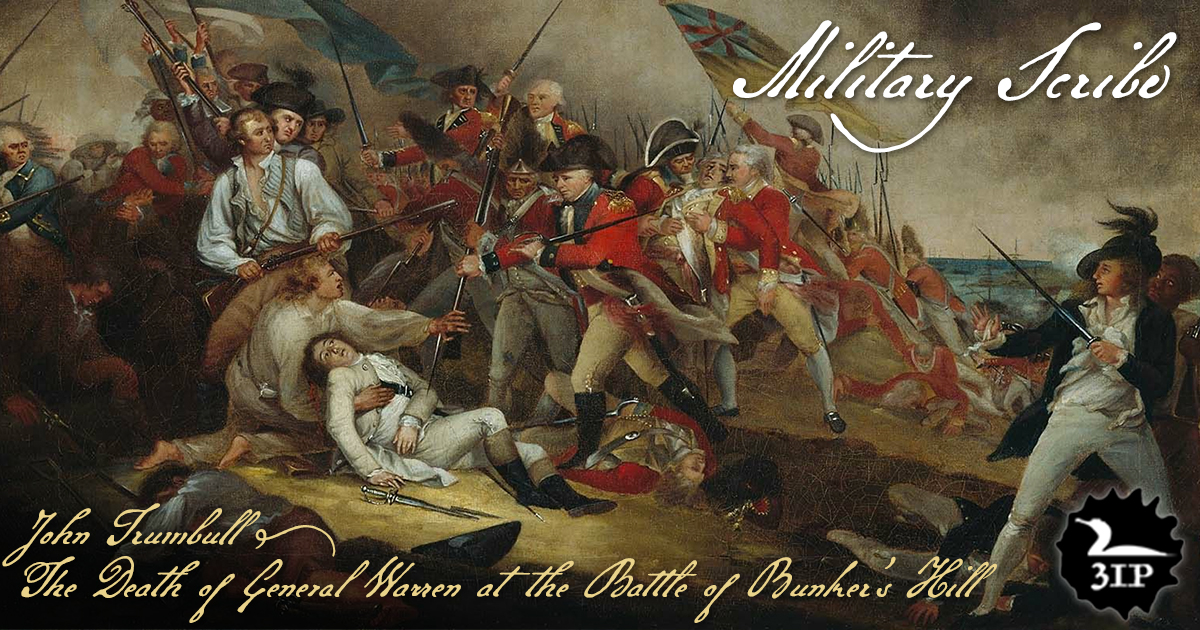
Military Scribe.
Historians solve puzzles by reading multiple clues. Their job is to interpret information gleaned from manifold sources—archaeological discoveries, ancient books, newspaper archives, boring old handwritten records—and come up with as accurate a narrative as they can of a particular time, place, event.
Sounds like a rather dry, academic pursuit—but is it really?
Heck, my devoted ma spent time as a historical librarian—and even I have only yet begun to appreciate the allure. Turns out those old handwritten records aren’t as boring as they might first appear.
Take my latest historical typeface, just released—a font I call Military Scribe. The inspiration came from a group of digitized military records from the 1770s sent to me by a friend and correspondent: muster rolls of the Tenth Regiment of Foot, a unit of British soldiers who fought on American soil in the early days of the Revolutionary War.

Compact, legible script.
Muster rolls. Lists of names of Englishmen, surrounded by dates and contractual boilerplate. Routine records written at a desk in an office somewhere by obscure military clerks who knew how to wield a pen.
I had about fifty pages to work with, spanning 1774 to 1779 and drafted by at least three or four different scribes. Right away I decided to concentrate on the work of one penman in particular—a clerk from the earlier part of the period with a particularly legible, compact hand—with some help from the script of another who wrote with a little more flair. The former seemed to take his job seriously, wrote legibly while cramming a lot in; the latter I took for a bit of a dandy, someone who might’ve stopped to admire what he’d written.

Fancier script.
What I do involves looking very closely at strokes and curves and shapes while also contemplating things at arm’s length. Mired in this kind of study, I can’t help but get a feel for the personalities of these people. And then the mind plays a sort of trick, and the years sort of slough away, and “history” starts to seem like a year or two ago.
First are the names of the men of the Tenth of Foot. A few sound old and peculiar, like Bartholomew Haycock or a soldier named William Frapwell, but I think I met Frank Cooper and John Marshall at a party. Then come the verbs that appear next to the names—“transferred,” “discharged,” “sick,” “deserted,” “died.” You start to get a feel for the time and place and people.

18th century dittos.
Invariably you learn things. From the rosters of the Tenth of Foot I found out that the British spelling of sergeant was “serjeant” until about a half-century ago. I also learned that, in handwritten history, the term “ditto” was as serviceable 240 years ago as it is today—and that “do” was an acceptable abbreviation. In fact, I learned so many new abbreviations for names that I included a few in the font.
But one name in particular caught my eye, a captain named Mundy Pole. I’d never heard the name before and had to make sure I was reading it right and googled the fellow—and come to find out he played a role in the famous events of April 1775 in and around Concord, Massachusetts.

Mention of Capt. Mundy Pole.
“Captain Mundy Pole of the Tenth Regiment with one hundred men had been detailed by Lieut.-Col. Smith for guard duty at the South Bridge. He was also instructed to destroy any public stores that he might find in that vinicity.” —The Battle of April 19 1775, by Frank Warren Coburn (1912)
[My listing of Capt. Pole is from later that year.]
And this discovery got me researching other old accounts of the Battles of Lexington and Concord—one of the most interesting coming in the latter pages of the Massachusetts Historical Society’s copy of General Gage’s Instructions of 22d February 1775. Captain Pole is mentioned there, too. Check it out.
Historical re-enactors still faithfully recreate this expedition of the Tenth of Foot—the grenadiers and light infantry units who were among the first to come face to face with the “rebel” militias and Minutemen of inland Massachusetts, scene of Emerson’s “shot heard round the world.”
But no one writes muster rolls by hand anymore, I’m pretty sure.
Miscellanea
» Beautiful old love letters in a box.
» Century-old chalkboards found preserved in Oklahoma.
» The power of a handwritten letter from Dad.
» New pen designs are still a thing.

Military Scribe font
Tags: Battles of Lexington and Concord, British soldiers, disconnected cursive, handwritten history, historical documents, historical reenactment, muster rolls, old handwriting, Revolutionary War, Tenth Regiment of Foot, vintage penmanship
This entry was posted
on Wednesday, July 22nd, 2015 at 11:53 am and is filed under Historical Figures, History, Paleography, Penmanship, Ruminations, Specimens.
Leave a response, or trackback from your own site.